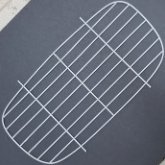-
Posts
2,029 -
Joined
-
Last visited
Personal Information
-
Location
Houston
-
Interests
7s
-
Occupation
If I told you, I'd have to buy you a drink
-
Se7en
1996 Caterham Xflow Live Axle
Recent Profile Visitors
The recent visitors block is disabled and is not being shown to other users.
-
-
Only for the 1 3-14 twin cam SS models. The lamps on Randy's car look Caterham. Could be a Loti with Cat furniture. Randy sure is being tight with the pictures.
-
@Gene_W are you going to race?
-
IamScotticus started following Alternator replacement , What are these brass tubes? , What fuel pump for a 1340 Cosworth? and 3 others
-
Cap them?
-
Running 1980 Fiesta on AutoZone, (and who doesn't have an AZ near them?), There is an Alternator but there are bearings and brushes as well.
-
DB Electrical, Located in Kingsport, Tennessee
-

What fuel pump for a 1340 Cosworth?
IamScotticus replied to Bill's topic in General Sevens Discussion
From Pegasus https://www.pegasusautoracing.com/productdetails.asp?RecID=31616 Use a spacer block with these pumps https://www.pegasusautoracing.com/productdetails.asp?RecID=3583 These mechanical pumps are known to have adequate flow at the recommended low pressure of 3-4 psi. The Formula Ford racers run these to feed 32/36 DGVs without pressure regulation. But I think the DCOEs are different, perhaps more pressure sensitive. I would recommend a pressure regulator for DCOEs, even from a mechanical. I could be wrong. But certainly regulate any electric pump. -
@Bill if you are blanking off the cam driven fuel pump, going electric (use a regulator), Burtons has a cover with an oil slinging shield over the cam.
-
I have drilled out my scuttle rivets as well, for ease of access., on a previous scuttle. I have a newer one on now, and intend to do it again. When I can, I would like to replace the firewall with a new piece of a thicker gage sheet. In that picture, LHD S3 has indicators under the headlamps whereas a RHD S3 I have seen does not. I am thinking these were USA DOT compliance additions. On the S3 photo, I count 24-25 rivets. My scuttle has 24
-
Can we have the Geo alternator lug mounting spacing dimensions? Outside, inside?
-
These are my notes from various sources ALTERNATOR Lucas 15/16/17 ACR (type 36A) Lucas ACR 17 Mfg # 14014 Triumph TR6, GT6, MG MGB/C Mercury Capri 1970 Denso 55A WAI 314535308400 Caterham 432836 Bracket: FORD 721f-10145-aa
-
I don't IG. Is there another way to see this?
-
I hope you don't cut the OE mount. Whatever you weld, it will break.
-
Check local auto parts for 70-73 Ford Pinto 1600. You can still get a water pump. Maybe the alternator as well. Same for 2.0 ?
-
Caterham has goals of 1k cars a month. An engine supplier would have to be able to fill that order. Horse can. Westfield is wise to stay small and fit an engine that will be attractive to motoring enthusiasts, not one that meets fulfillment deadlines. Function over form when the engineers take over.




